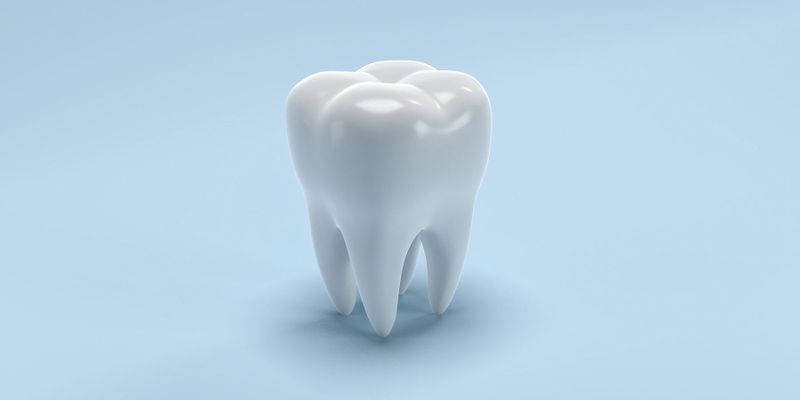山水同盟
青山依旧在,几度夕阳红新药可以帮助再生失去的牙齿  精选
精选
||
新药可以帮助再生失去的牙齿
诸平


In mice deficient in USAG-1, an antagonist of BMP, the trace deciduous incisors survive and erupt as excess teeth. Kyoto University/Katsu Takahashi

Fig. 6 Supernumerary tooth of maxillary incisors of ferrets upon administration of USAG-1–neutralizing antibody #37.
据日本京都大学(Kyoto University)2021年3月29日提供的消息,日本的研究人员报告说,一种基因的抗体可以刺激患有先天性牙齿发育不全的小鼠的牙齿生长。
对于任何掉了一颗牙的孩子来说,牙仙子(tooth fairy)都是受欢迎的客人。不仅仙女会在枕头下留下一个小礼物,而且孩子可以保证在几个月后得到一颗新牙。对于那些失去牙齿的成年人来说,就不可能是这样的了。
但是,京都大学和福井大学(University of Fukui)的科学家进行的一项新研究,可能会对失去牙齿的成年人带来一些希望。研究小组报告说,一种基因的抗体-子宫致敏相关基因1(uterine sensitization associated gene-1简称USAG-1)-可以刺激患有先天性牙齿发育不全的小鼠的牙齿生长。该论文于2021年2月12日已经在《科学进展》(Science Advances)杂志网站发表——A. Murashima-Suginami, H. Kiso, Y. Tokita, E. Mihara, Y. Nambu, R. Uozumi, Y. Tabata, K. Bessho, J. Takagi, M. Sugai, K. Takahashi. Anti–USAG-1 therapy for tooth regeneration through enhanced BMP signaling. Science Advances 12 Feb 2021: Vol. 7, no. 7, eabf1798. DOI:10.1126/sciadv.abf1798
https://advances.sciencemag.org/content/7/7/eabf1798
参与此项研究的除了日本京都大学和福井大学的研究人员之外,还有来自日本爱知人类服务中心发育研究所(Institute for Developmental Research, Aichi Human Service Center)以及日本大阪大学(Osaka University)的研究人员。
尽管正常成人的嘴巴有32颗牙齿,但由于先天性疾病,约有1%人口的牙齿却并非是32颗,而是或多或少于32颗。科学家已经探究了牙齿过多的病例的遗传原因,以此作为成年人牙齿再生的线索。
该研究的主要作者之一,京都大学医学院研究生院(Kyoto University Graduate School of Medicine)高级讲师Katsu Takahashi表示,已经确定了导致牙齿发育的基本分子。Katsu Takahashi说:“单个牙齿的形态发生(morphogenesis)取决于包括骨形态发生蛋白(bone morphogenetic protein简称BMP)在内的几种分子与Wnt发信号(Wnt signaling)的相互作用。”
BMP和Wnt的作用远不止于牙齿的发育。它们可以在人体甚至达到葡萄干大小之前就调节多种器官和组织的生长。因此,通常避免直接影响其活性的药物,因为副作用可能会影响整个身体。研究人员认为靶向针对BMP和Wnt的拮抗因子在牙齿发育中可能更安全,因此他们考虑了该基因USAG-1。Katsu Takahashi补充说:“我们知道抑制USAG-1有益于牙齿生长。我们不知道这是否足够。”
因此,科学家研究了几种针对USAG-1的单克隆抗体的作用。单克隆抗体通常用于治疗癌症、关节炎和疫苗开发。
USAG-1与BMP和Wnt都相互作用。结果,几种抗体导致小鼠的出生和存活率低下,从而证实了BMP和Wnt对全身生长的重要性。但是,一种有希望的抗体仅破坏了USAG-1与BMP的相互作用。
用这种抗体进行的实验表明,BMP信号传导对于确定小鼠的牙齿数量至关重要。而且,单次施用足以产生整颗牙齿。随后的实验表明,在雪貂中有相同的好处。
Katsu Takahashi解释说:“白鼬是一种双齿动物,具有与人类相似的牙齿模式。我们的下一个计划是测试对其他动物(如猪和狗)的抗体。”
该研究是第一个显示单克隆抗体对牙齿再生有益的研究,并为目前只能通过植入物和其他人工措施解决的临床问题提供了新的治疗框架。该研究的另一位作者,福井大学的Manabu Sugai总结说:“常规组织工程技术不适用于牙齿再生。我们的研究表明,无细胞分子疗法(cell-free molecular therapy)可有效治疗多种先天性齿发育不全。”上述介绍仅供参考,更多信息敬请注意浏览原文或者相关报道。
Uterine sensitization–associated gene-1 (USAG-1) deficiency leads to enhanced bone morphogenetic protein (BMP) signaling, leading to supernumerary teeth formation. Furthermore, antibodies interfering with binding of USAG-1 to BMP, but not lipoprotein receptor–related protein 5/6 (LRP5/6), accelerate tooth development. Since USAG-1 inhibits Wnt and BMP signals, the essential factors for tooth development, via direct binding to BMP and Wnt coreceptor LRP5/6, we hypothesized that USAG-1 plays key regulatory roles in suppressing tooth development. However, the involvement of USAG-1 in various types of congenital tooth agenesis remains unknown. Here, we show that blocking USAG-1 function through USAG-1 knockout or anti–USAG-1 antibody administration relieves congenital tooth agenesis caused by various genetic abnormalities in mice. Our results demonstrate that USAG-1 controls the number of teeth by inhibiting development of potential tooth germs in wild-type or mutant mice missing teeth. Anti–USAG-1 antibody administration is, therefore, a promising approach for tooth regeneration therapy.
http://blog.sciencenet.cn/blog-212210-1279390.html




